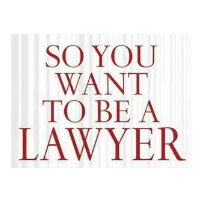One in 10 Enrollees at Unaccredited California Law Schools Graduates

Former Los Angeles Mayor Antonio Villaraigosa probably won’t be recording any ads for People’s College of Law (PCL) in Los Angeles County. He was one of the few in his class to graduate and he failed the bar exam four times before giving up.
PCL is nonprofit, a rarity among the unaccredited law schools flourishing in California. Most are owned by individuals or small companies. But the Los Angeles Times included the school in its investigation of unaccredited law schools and why just one in 10 enrollees graduates.
Only one in five of the graduates passes the state Bar exam and earns an opportunity to compete for a job in the totally over-saturated legal job market.
This is overwhelmingly a California story. The state is home to most of the nation’s unaccredited law schools because California is one of the few states that lets people take the bar exam without graduating from an accredited school.
The State Bar of California lists 21 schools approved by the American Bar Association and 19 by the state Committee of Bar Examiners. There are 23 unaccredited schools: 11 are fixed facilities, seven are correspondence schools and five are distance-learning schools that utilize modern communication technology.
Unaccredited schools are comparatively unregulated with much lower standards. Schools with national accreditation, like Stanford, graduate students in three years and must have a 75% bar passage rate in three out of five years. Those with California accreditation can be four-year schools and must average 40% bar passage over five years.
Unaccredited schools are four-year schools with no bar passage requirements.
Another difference between the two: honesty. They do have to tell students they are not accredited, and what that means. But accredited schools have to make public their graduation rates. Unaccredited schools don’t and never do, according to the Times.
It has been suggested that any perceived problems with unaccredited schools would be rendered moot by the marketplace if they were simply required to print their dropout rates in large type across the top of their homepages. Informed students wouldn’t attend those schools.
Others disagree. Some defenders of the schools cite the high dropout rate as evidence of the schools’ high standards. They also cite lower tuition as being egalitarian, giving older, working individuals a chance at the brass ring. There are stories of low-income workers, immigrants and airline pilots living the American Dream by working hard in their spare time to become lawyers.
Unaccredited schools are not totally unregulated. They must be registered with the Committee of Bar Examiners, employ qualified faculty, maintain a law library and other specified facilities, be adequately financed and only admit students who appear able to complete the course. Either the standard for that last item is on the weak side or enforcement of all the provisions is suspect. Or both.
–Ken Broder
To Learn More:
Nearly 9 in 10 Students Drop out of Unaccredited Law Schools in California (by Jason Song, Victoria Kim and Sandra Poindexter, Los Angeles Times)
California's State-Accredited and Unaccredited Law Schools and the Baby Bar (Top-Law-Schools.com)
80 Law Schools Are at Risk of Closure, Mostly in California, Florida, Indiana, Michigan, Ohio, and Pennsylvania (by Paul Caron, Tax Prof Blog)
Correspondence and Unaccredited California Law Schools—July Bar Exam 2014 (by James Mullen, Bar Exam Stats)
- Top Stories
- Controversies
- Where is the Money Going?
- California and the Nation
- Appointments and Resignations
- Unusual News
- Latest News
- California Forbids U.S. Immigration Agents from Pretending to be Police
- California Lawmakers Urged to Strip “Self-Dealing” Tax Board of Its Duties
- Big Oil’s Grip on California
- Santa Cruz Police See Homeland Security Betrayal in Use of Gang Roundup as Cover for Immigration Raid
- Oil Companies Face Deadline to Stop Polluting California Groundwater





